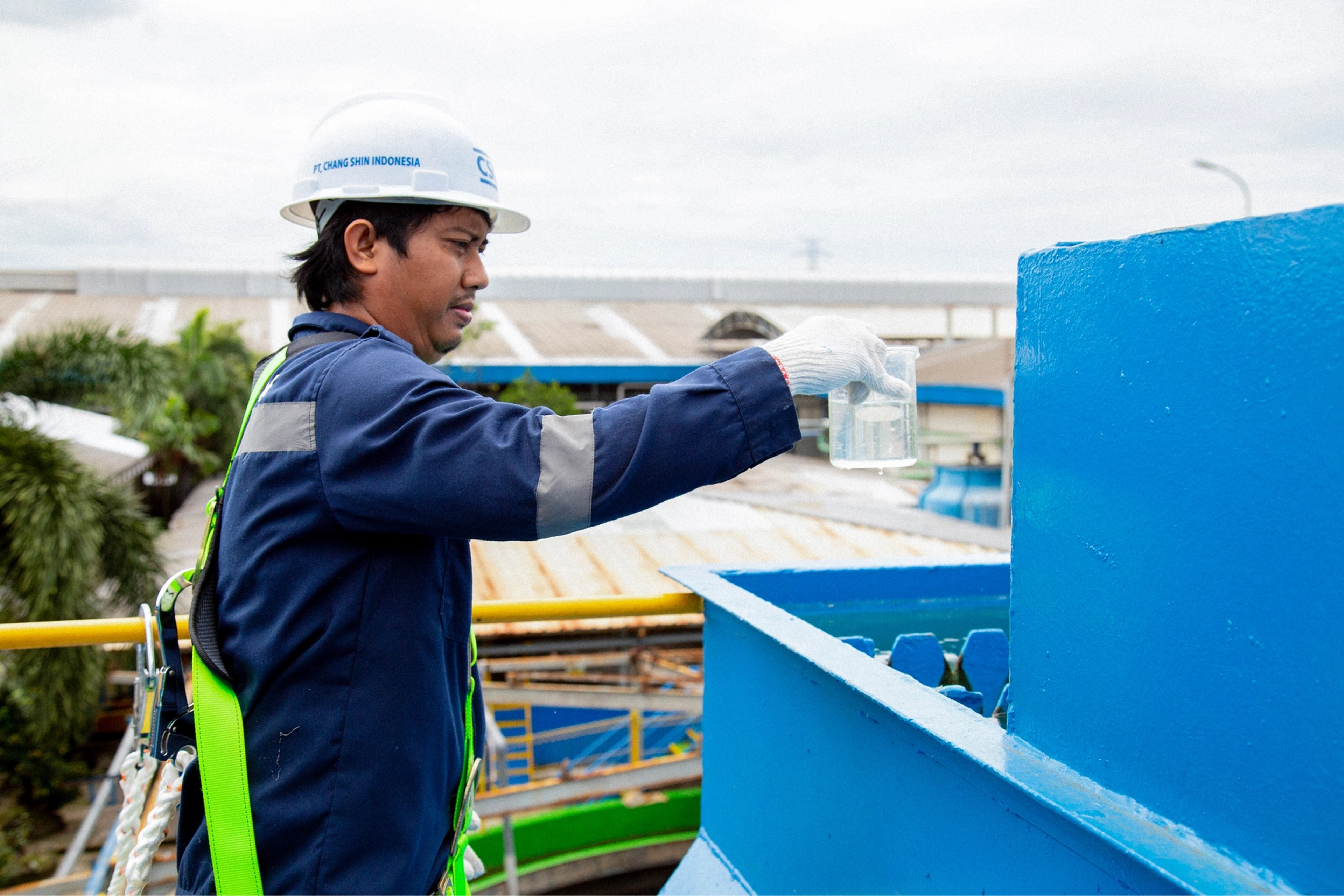Our Efforts to Conserve Water
With the majority of NIKE’s freshwater footprint linked to manufacturing and materials sourcing, we believe it’s critical for our business to reduce our reliance on freshwater while also building resilience in the communities where we operate. We also know challenges of this kind are too big to tackle alone. In collaboration with global partners and community stakeholders, we continue to strengthen water resilience in manufacturing and restore water in the raw materials supply chain.

We measure our progress in water stewardship by how much we reduce water use and how we improve water quality. In FY24, we achieved a 15% reduction in freshwater use for dyeing and finishing vs. our FY20 baseline by working with suppliers to increase water efficiency through automation, new wastewater recycling technologies, reducing reliance on freshwater by using wastewater from nearby facilities and closely monitoring water usage. To date, 90% of our strategic suppliers meet the Zero Discharge of Hazardous Chemicals (ZDHC) wastewater guidelines requirements. We are also working with industry groups and NGOs to develop an approach to reducing microfiber pollution.

As we see the effects of climate change impacting water quality and access, we know it’s critical to the resilience of our supply chain and the communities where we operate to minimize our freshwater and biodiversity impacts. We do this by supporting community action and partnering strategically on initiatives that restore water and address deforestation in local ecosystems.
Our water.org portfolio continues to grow, most recently with expansion to Indonesia. Through this work, local communities have improved access to clean water, sustainable forestry, biodiversity conservation and increased climate resiliency.
In collaboration with leading environmental organizations like The Nature Conservancy (TNC) and World Wildlife Fund (WWF), we are targeting ecosystem restoration projects in priority basins and our largest cotton sourcing countries—Australia, Brazil, India, Pakistan and the U.S. We are taking a holistic approach to these collaborative efforts, focusing on water restoration and protection, water for productive use and water access. Since FY20, we have restored a cumulative total of 18.51 billion liters of water across all active and completed projects. We have completed projects in Australia and India, currently have active projects in Brazil and Pakistan and are making significant headway in launching our latest project in Louisiana’s Atchafalaya Basin, which is anticipated to restore 5.86 billion liters annually once completed.